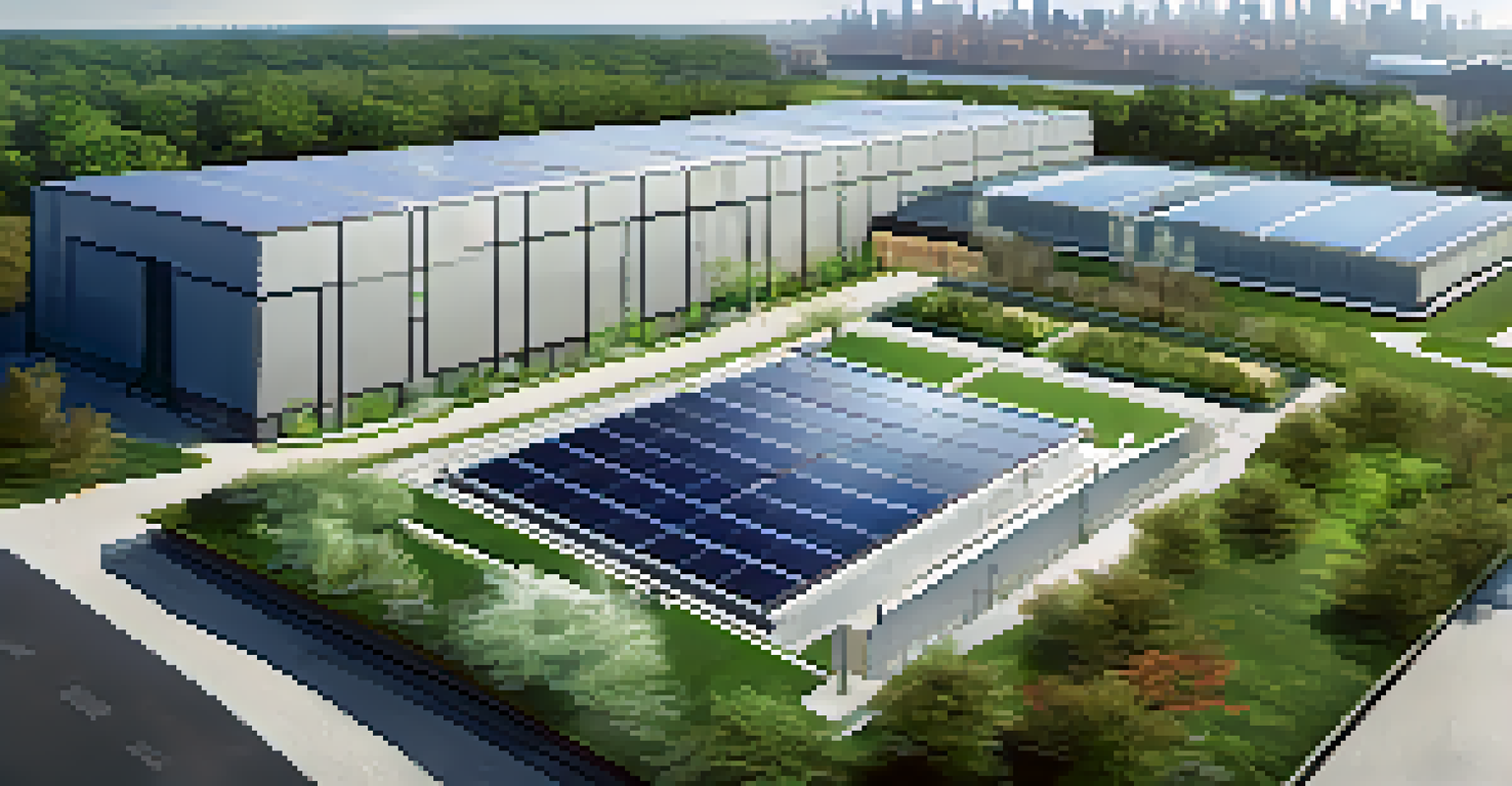The History of New York City's Water Supply System

Early Water Sources: The Beginnings of New York's Supply
New York City's water supply system has a rich history that dates back to its early days in the 17th century. Initially, residents relied on surface water from local streams and ponds, which were often contaminated. As the population grew, the need for a more reliable water source became apparent, prompting the city to seek out better options. This led to the construction of the first municipal waterworks in 1776, drawing water from the Collect Pond.
Water is the driving force of all nature.
The Collect Pond, however, quickly became polluted due to urban development, forcing the city to look further afield for clean water. In the early 1800s, the city began to tap into the Croton River, which was a significant improvement. The Croton Aqueduct, completed in 1842, brought fresh water from upstate New York, transforming the city's water supply and setting the stage for future expansion.
This early endeavor laid the groundwork for a more organized and engineered water supply system. The successful implementation of the Croton Aqueduct not only provided clean water but also demonstrated the importance of infrastructure in urban planning. As the demand for water increased, so did the need for a more robust system, leading to the evolution of the city’s water supply into what we know today.
The Expansion of the Water Supply System in the 19th Century
The 19th century saw explosive growth in New York City, which brought with it an ever-increasing demand for water. To meet this demand, the city expanded its water supply system significantly. New reservoirs were constructed, including the Croton Reservoir and later the New Croton Reservoir, to ensure that the city had enough water to support its burgeoning population.

In addition to building new reservoirs, the city also improved its distribution network. By the late 1800s, a series of pipes and aqueducts were laid out to transport water efficiently throughout the city. This was a monumental engineering feat, as it required the construction of bridges, tunnels, and various other structures to maintain a consistent water flow.
Historic Growth of NYC Water Supply
New York City's water supply system evolved from reliance on contaminated local sources to the construction of the Croton Aqueduct and subsequent reservoirs to meet increasing demand.
The improvements made during this period were crucial, as they not only provided adequate water supply but also addressed issues of public health. Clean water became essential for combating diseases like cholera, which plagued urban areas. The city's efforts to modernize its water supply system were a direct response to these health concerns, showcasing how infrastructure can greatly impact the quality of life.
The Creation of the Department of Water Supply
As New York City continued to grow, managing its water supply became increasingly complex. In 1905, the city established the Department of Water Supply, Gas, and Electricity to oversee the growing infrastructure. This marked a significant shift towards centralized management in an effort to streamline operations and ensure the efficient delivery of water to residents.
The first law of nature is to preserve oneself.
The newly formed department faced numerous challenges, including aging infrastructure and the need for modernization. They began to implement new technologies and processes to improve water quality and distribution. This included chlorination in the early 1900s, which became a standard practice to disinfect water and prevent waterborne diseases.
This centralized approach allowed for better planning and resource allocation. It also set the stage for future enhancements and expansions, as the city recognized the importance of maintaining a sustainable water supply system for its residents. The establishment of the department marked a pivotal moment in the history of NYC’s water management.
The Development of the Catskill and Delaware Aqueducts
As the city’s population continued to swell in the 20th century, the existing water sources were becoming insufficient. To remedy this, New York City invested in new aqueducts to bring in water from even further afield. The Catskill Aqueduct, completed in 1917, and the Delaware Aqueduct, finished in 1945, were monumental projects designed to meet the city’s growing needs.
These aqueducts transported water from the pristine reservoirs in the Catskill and Delaware watersheds, delivering high-quality drinking water to millions of New Yorkers. The construction of these aqueducts was a massive engineering challenge, involving the creation of tunnels, bridges, and significant alterations to the landscape. They not only increased the water supply but also ensured that the water remained clean and free from contamination.
Modern Challenges Ahead
Today, NYC faces challenges such as climate change impacts and aging infrastructure, requiring ongoing maintenance and innovative solutions for equitable access to clean water.
The introduction of these aqueducts marked a new era in NYC's water supply history. It demonstrated how innovative engineering solutions could solve complex urban problems. Furthermore, the commitment to sourcing water from remote areas highlighted the city’s dedication to public health and environmental stewardship.
Modernization and Infrastructure Improvements in the 21st Century
In the 21st century, the focus of New York City's water supply system has shifted towards modernization and sustainability. Aging infrastructure has become a prominent issue, and the city has launched initiatives to upgrade its water supply systems. Projects include replacing old pipes, improving water treatment facilities, and implementing green infrastructure to manage stormwater.
Additionally, advancements in technology have played a crucial role in enhancing water quality and efficiency. For instance, the use of real-time monitoring systems allows for better management of water distribution and detection of leaks. This proactive approach helps to minimize waste and ensures that residents receive safe drinking water.
These modernization efforts reflect the city’s commitment to not only providing water but also protecting the environment. By investing in sustainable practices, NYC is paving the way for a resilient water supply system that can adapt to future challenges. This focus on sustainability is essential for future generations.
Challenges Facing NYC's Water Supply System Today
Despite its robust history, New York City's water supply system faces several challenges in the present day. Climate change has introduced new complications, such as increased rainfall and flooding, which can overwhelm existing infrastructure. Additionally, the aging pipes and aqueducts require constant maintenance and upgrades to prevent leaks and contamination.
Another significant challenge is ensuring equitable access to clean water for all residents. Disparities in infrastructure can lead to some neighborhoods experiencing poorer water quality compared to others. Addressing these inequalities is crucial for maintaining public health and trust in the city’s water supply system.
Emphasis on Conservation Education
With growing environmental pressures, NYC prioritizes water conservation and education to foster sustainable practices among residents and ensure long-term water availability.
The city is actively working to tackle these challenges through innovative strategies and community engagement. Initiatives that promote water conservation, environmental protection, and public education are essential components of the city’s approach. By addressing these issues head-on, New York City aims to maintain its legacy of providing high-quality water to its residents.
The Importance of Water Conservation and Education
As New York City looks to the future, water conservation and education are becoming increasingly important. With growing populations and environmental pressures, it’s essential for residents to understand the value of water and how to use it wisely. Educational programs are being implemented to raise awareness about water conservation practices, helping to foster a culture of sustainability.
Simple actions like fixing leaks, using water-efficient fixtures, and practicing mindful water use can make a significant difference. By encouraging residents to adopt these practices, the city aims to reduce water consumption and protect its precious resources. Community involvement in conservation efforts is vital for long-term sustainability.

Furthermore, educating residents about the water supply system helps to build trust and transparency. Understanding where their water comes from and how it is treated empowers citizens to take an active role in protecting their water resources. This collective effort is essential for ensuring that New York City’s water supply remains resilient for generations to come.